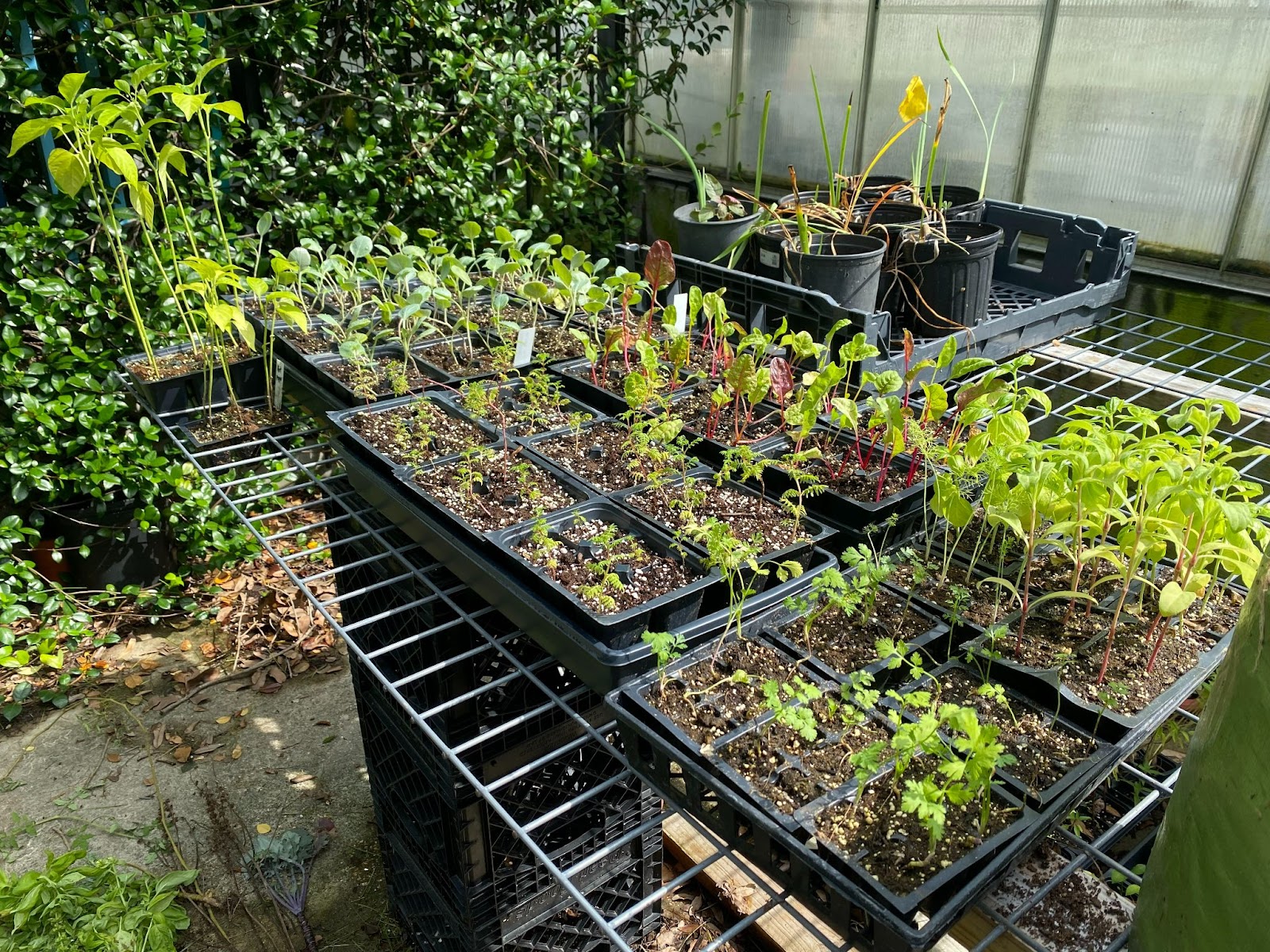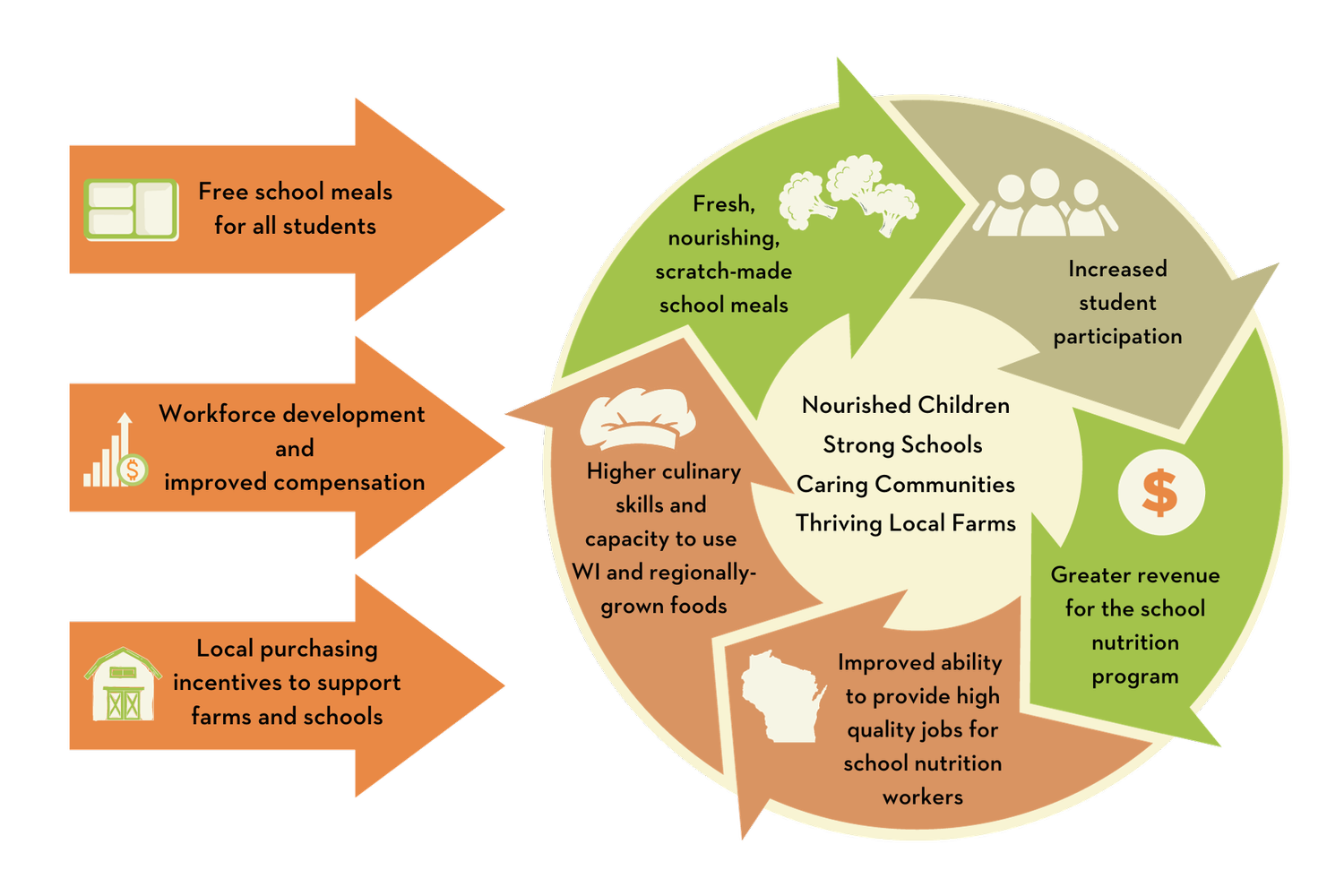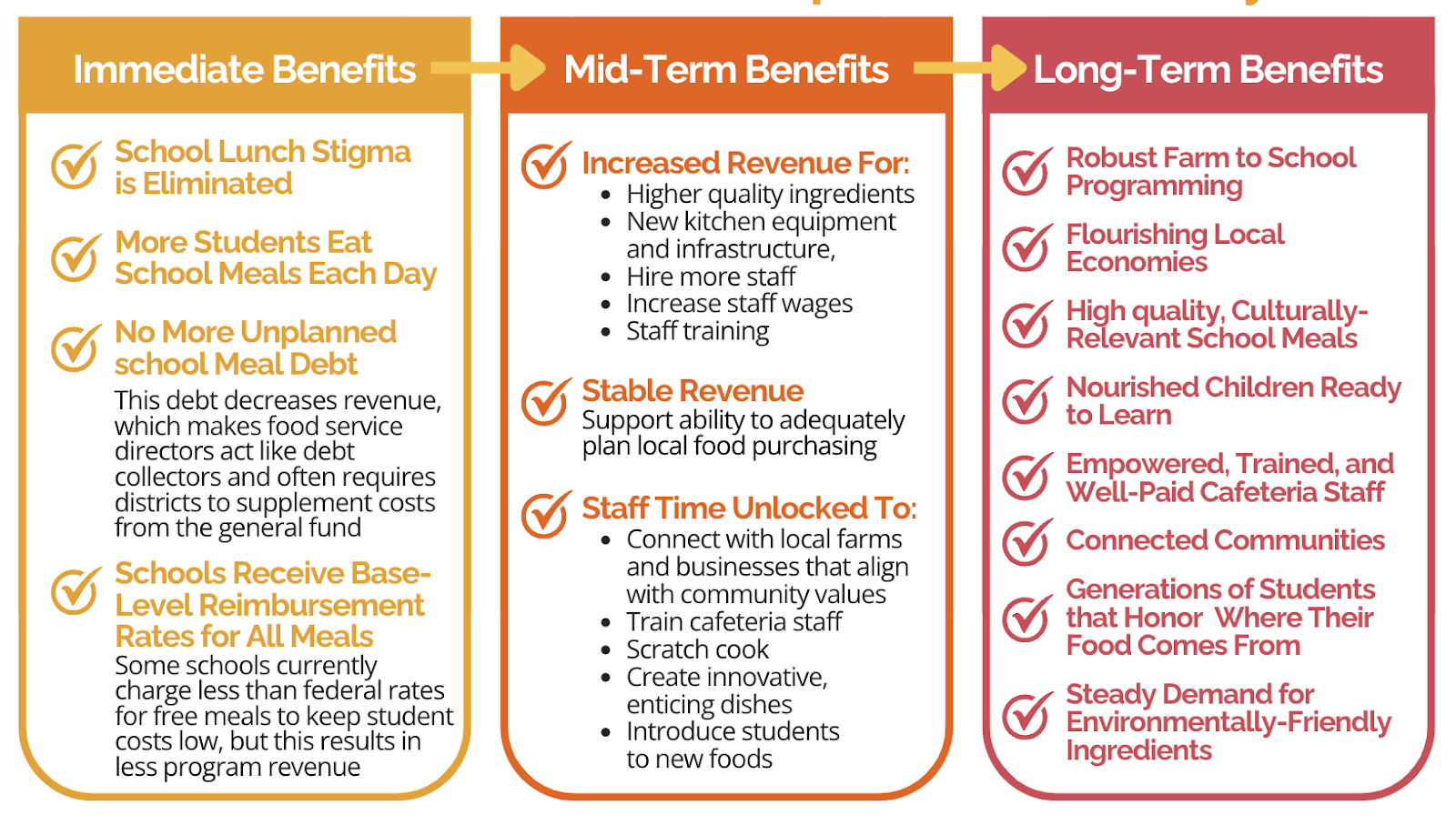2024 National School Nutrition Association Survey Highlights the Growing Farm to School Trend, Importance of School Meals for All
By Kelcie Creel, NFSN Policy Intern
In honor of School Lunch Hero Day, we want to highlight the perspectives of child nutrition professionals who are doing the on-the-ground work of farm to school. All signs point to the critical impact of the farm to school movement and values-aligned school meals throughout the country. As our movement continues to grow, thousands of school nutrition directors recently expressed their plans to buy locally sourced ingredients, incorporate scratch-cooking into their menus, and get students interested in nutrition through farm to school programming, taste tests, and other educational activities.
Farm to School and Scratch Cooking are Growing Trends
The School Nutrition Association (SNA), a nonprofit organization that represents 50,000 school nutrition professionals nationwide, recently released its 2024 School Nutrition Trends Report. The seventy-five-page document details the findings from a nationwide survey of 1,343 school nutrition directors, conducted in the Fall of 2023. SNA aimed to identify its members’ implementation challenges, reimbursement trends, programs’ financial sustainability, attitudes toward federal nutrition standards, and menu trends.
SNA asked nutrition directors about their planned menu changes and goals for the year ahead. The top three planned menu changes included expanding menu options (65%), increasing locally grown or raised food options (56%), and increasing the number of scratch-prepared meals (53%).

Additionally, nutrition directors also reported their strategies for increasing student acceptance of their planned menu changes. These strategies included having their students taste test the meals (66%), implementing farm to school or school gardening programs (40%), and conducting nutrition education initiatives (40%).

Challenges in School Food
Responses regarding challenges were not surprising; the top three administrative challenges for SY 2023-24 were cost increases (99.3%), staff shortages (90.5%), and menu item shortages (87.2%).

These top-three reported challenges are the same as were reported in last year’s 2023 School Nutrition Trends Report. Breakfast items (74.8%), entrees (74.1%), and snacks (58.4%) were reported the most frequently as significantly or moderately difficult to procure whereas items such as vegetables (42.1%), condiments (43.0%) and fruits (44.3%) were reported the least frequently as items that are difficult to procure. Curiously, directors from the southeastern United States were more likely to report challenges in milk procurement than any other FNS region in the nation.
This news comes at a time when school budgets are facing historic disinvestment. School nutrition directors are often faced with a myriad of challenges where they’re responsible for nourishing students while complying with stringent federal nutrition standards, all while operating under a tight budget.
Supply Chain Assistance Funds Improving School Food
During the COVID-19 pandemic, the USDA announced four rounds of funding through the Supply Chain Assistance (SCA) program. This program provided more than $3.5 billion to child nutrition programs to navigate supply chain challenges spurred by the pandemic. These SCA funds were complemented by other COVID-19 relief era programs such as the Local Food for Schools Cooperative Agreement Program and the Farm to School State Formula grants.
In the survey, food service directors shared the direct impacts of the SCA funds since 2022. These include:
- Menu improvements (62.4%, n = 1,109 directors)
- Purchasing new equipment (56.4%)
- Supporting staff through increased personnel, increased wages, and bonuses (40.1%),
- Increased local sourcing (36.1%),
- Delayed meal price increases (24.5%),
- Increasing access to free school meals (13.7%),
- And nutrition education initiatives (9.9%), among others.
These results demonstrate the diverse and far-reaching benefits that come from policies that invest in school meals. Time is of the essence to continue to advocate for sustained funding for child nutrition programs.
Universal School Meals and School Meal Debt
The report also shares positive outcomes of School Meals for All (also known as universal free meals) and the growing school meal crisis. SNA found that roughly half of the respondents’ schools offer free school breakfast through the Community Eligibility Provision districtwide (51%), and nearly half offer free lunch districtwide (49%).
The respondents whose districts offer universal meals reported on the benefits they’ve observed after implementing the program. 87% reported universal meals have increased participation in their school meal program. Additionally, 66% of the respondents reported observing a more positive social environment in the cafeteria.
However, among the respondents whose districts do offer universal school meals, 91% reported having unpaid school meal debt. The range of debt among the 808 school districts reporting ranged from $10.00 to $1,000,000. Within the current system, if school meal debt becomes large enough at the local level, it can contribute to a negative cycle that leaves families further indebted while not adequately addressing students’ nutrition, as illustrated below.

When property taxes increase, families in economically diverse communities are left with an even bigger financial burden. As the cost of living continues to increase, many working-class families face the difficult situation of paying their bills or sending their children to school without lunch money or a nutritious meal from home.
This inequitable system disproportionately affects families who are in the gap of not being able to qualify for free or reduced-price school meals. The best way to combat unplanned school meal debt is to create state-level School Meals for All policies, which can allow school nutrition directors to adequately plan their budgets and focus on serving nutritionally-dense, high-quality meals to students.
Values-Aligned Universal Meals: The Future of School Nutrition Administration
The growing interest in scratch cooking and purchasing local food, in combination with benefits from universal access to school meals, points to the layer cake of benefits that values-aligned universal meals can have on students, directors, growers, and communities.
This report solidifies how the systems change efforts of National Farm to School Network partners is taking hold across the nation in local communities. Now is the time to celebrate these wins, and continue to embrace policies that can further support our shared values of economic justice, environmental justice, health impact, racial equity, animal welfare, and respecting workers rights. The National Farm to School Network has many more resources about advocating for value-aligned universal meals on our website if you’d like to learn more.








.png)









